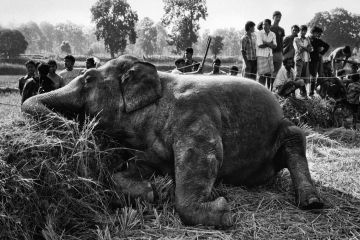My first experience of coal mining was in
1999 when I took a short bus ride from Varanasi to a small town called
Chandasi, the biggest coal depot in Asia. The Mughalsarai train station, which
is two kilometres from the depot, is used as a major hub for transporting coal
from the mines. The two-lane highway is lined with depots of various sizes.
Trucks are constantly on the move, taking coal to various distributors,
factories, and consumers. Hundreds of men and women spend all day shovelling





